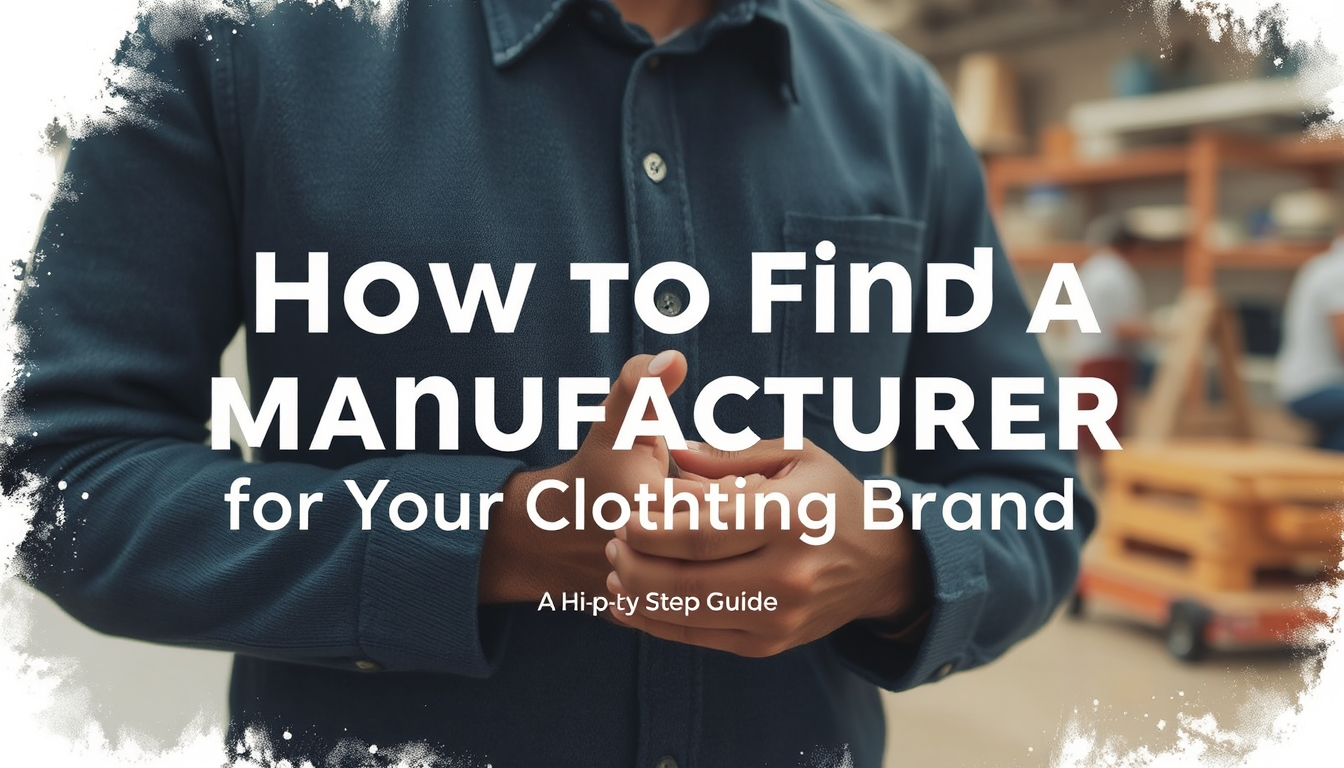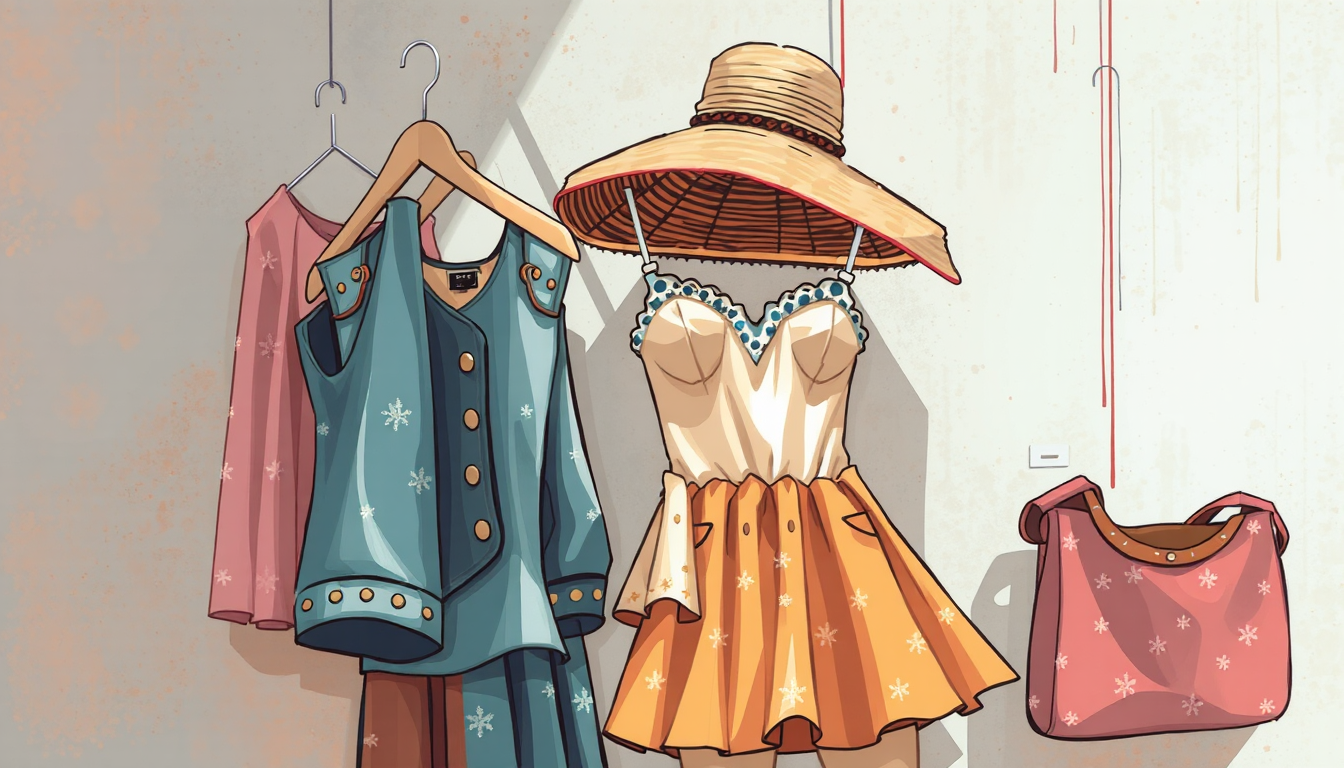Starting a clothing brand is an exciting journey full of creativity. Finding the right manufacturer who can bring your designs to life is one of the most important steps you’ll take. You need more than just a great idea to succeed in the clothing business. Your production partner must be reliable, skilled, and able to meet your brand’s standards. We know this challenge well. In this guide, we’ll take away the confusion and give you a clear roadmap to find the right manufacturing partner for your brand.
Step 1: Prepare Your “Manufacturer-Ready” Package Before You Search
Getting ready before you contact any manufacturers is key. Approaching factories with unclear ideas will likely get you ignored or quoted incorrectly. A well-prepared package shows you’re serious about your business. This preparation will save you many hours of back-and-forth messages and help prevent costly mistakes. The most important part of your package is the “Tech Pack.” This is what all clothing producers understand, like a blueprint for your garment. A good tech pack makes sure everyone knows exactly what you want. Here’s what every professional tech pack must include:
- Technical Sketches: These are flat drawings of your garment from different angles. They should show all details like seams, stitching, and where hardware goes.
- Bill of Materials (BOM): This lists every item needed to make your garment. It includes main fabric, linings, zippers, buttons, labels, and even thread types.
- Graded Spec Sheet: This shows the exact measurements for each part of your garment in all sizes. It helps ensure consistent sizing.
- Construction Details: These are clear instructions on how to sew the garment. They specify stitch types, seam allowances, and notes for complicated areas.
- Artwork & Colorways: If your design has prints or graphics, you need to provide high-quality art files. You should specify exact color codes to ensure accuracy. You should also know your target cost per item and how many pieces you want to order. This information is essential for any serious talk with manufacturers.
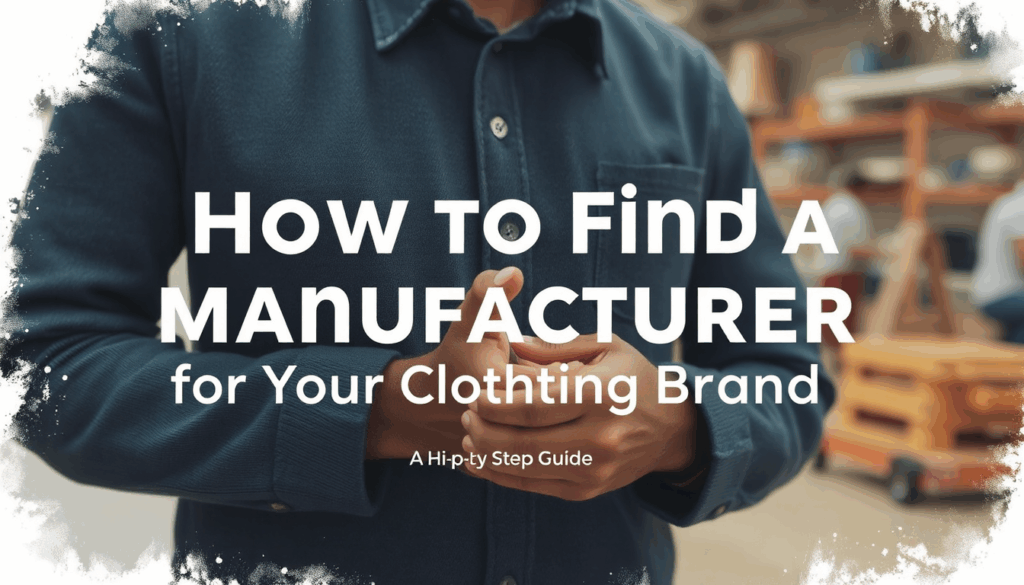
Step 2: Where to Find Potential Clothing Manufacturers
Now that your tech pack is ready, it’s time to start looking for manufacturers. There are many ways to find them, each with its own benefits. Using both online and offline methods will help you build a strong list of potential partners. This approach helps make your supply chain stronger and less likely to face problems.
Online Channels
The internet gives you access to manufacturers worldwide, but you need to search carefully.
- B2B Platforms: Websites like Alibaba are great for finding overseas manufacturers for larger orders. For US production, try Maker’s Row, or for global options, check out Sewport.
- Social Media & Industry Forums: LinkedIn can help you find production managers or factory owners. Reddit communities often have brand owners sharing their experiences and recommendations.
- Strategic Google Searches: Use specific search terms like “low MOQ cut and sew manufacturer” or “sustainable activewear factory Portugal” to find better matches.
Offline Channels
Meeting in person can build trust and let you see a manufacturer’s quality firsthand.
- Industry Trade Shows: Events like Texworld, MAGIC, and Premiere Vision bring together fabric suppliers and manufacturers. You can meet factory representatives face-to-face and see samples of their work.
- Local Fashion Networks: Many cities have fashion districts or apparel associations. Getting involved with these communities can lead to trusted referrals. Keeping up with industry trends like nearshoring and sustainability can help you make smarter decisions about your manufacturing partners.
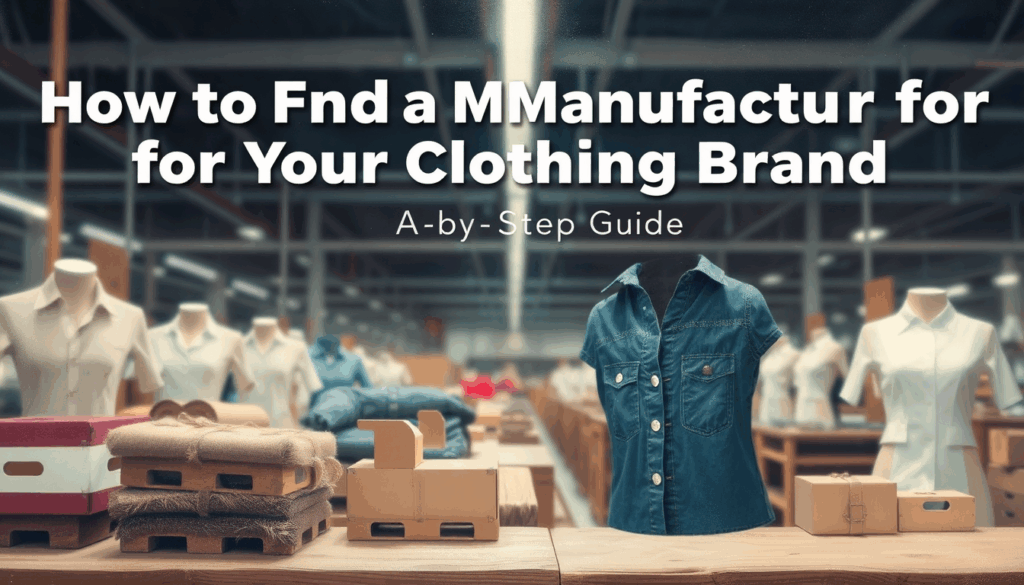
Step 3: Domestic vs. Overseas Manufacturing: Which Is Right for You?
One big decision is whether to make your clothing in your own country or overseas. There’s no single “best” choice – it depends on what matters most to your brand. Domestic manufacturing means producing in countries like the USA or in the EU. Overseas manufacturing usually refers to production in Asia, Eastern Europe, or South America. Here’s a comparison to help you decide:
| Feature | Domestic Manufacturing (e.g., USA/EU) | Overseas Manufacturing (e.g., Asia) |
| Cost | Higher labor costs, potentially lower shipping. | Lower labor costs, higher shipping & tariffs. |
| MOQ | Often lower Minimum Order Quantities (MOQs). | Typically higher MOQs. |
| Communication | Easier communication, same time zone. | Potential language barriers, time zone differences. |
| Speed & Lead Time | Faster turnaround and shipping. | Longer production and shipping times. |
| Quality Control | Easier to visit the factory and oversee quality. | Harder to monitor, may require third-party QC. |
| Sustainability | Smaller carbon footprint, often stricter labor laws. | Varies greatly, requires extensive due diligence. |
| For small businesses, local production often makes sense because of easier oversight and lower minimum orders. The U.S. Small Business Administration points out many strategic benefits of domestic sourcing. |
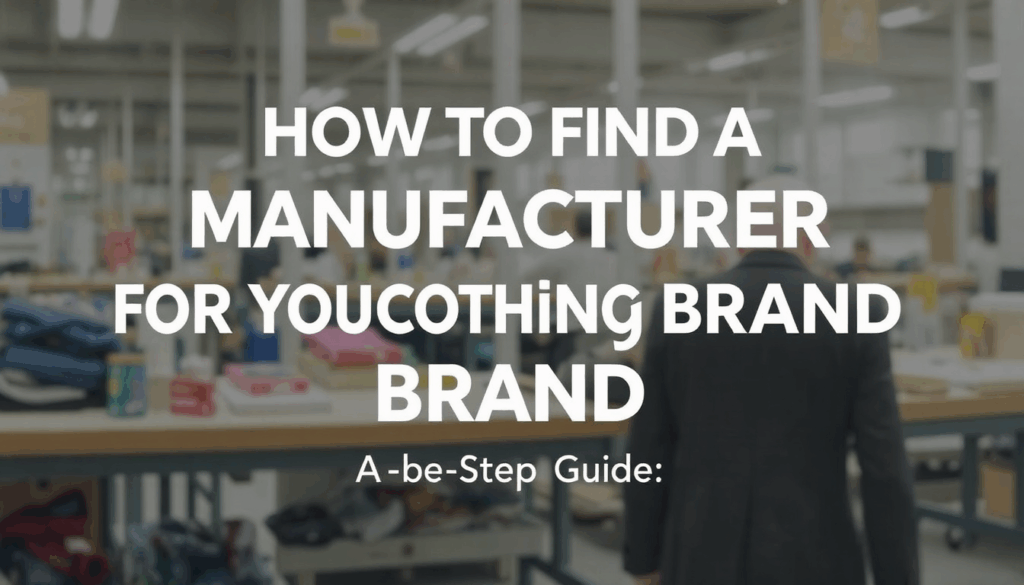
Step 4: The Vetting Process: A Checklist for Choosing Your Partner
You’ve done your research and have a shortlist of potential manufacturers. The vetting phase is where you separate good partners from those that could harm your brand. From our years in the industry, here’s how we suggest checking if a manufacturer is right for you.
Phase 1: Initial Outreach and Key Questions
Your first contact should be professional and brief. Introduce your brand, attach your tech pack, and ask these important questions:
- “What is your Minimum Order Quantity per style and color?”
- “Can you share examples of similar products you’ve made?”
- “What is your pricing structure? Do you offer CMT or Full Package Production?”
- “How long does it take to make a sample? How long for a full production run?”
- “Can you provide references from other brands you work with?”
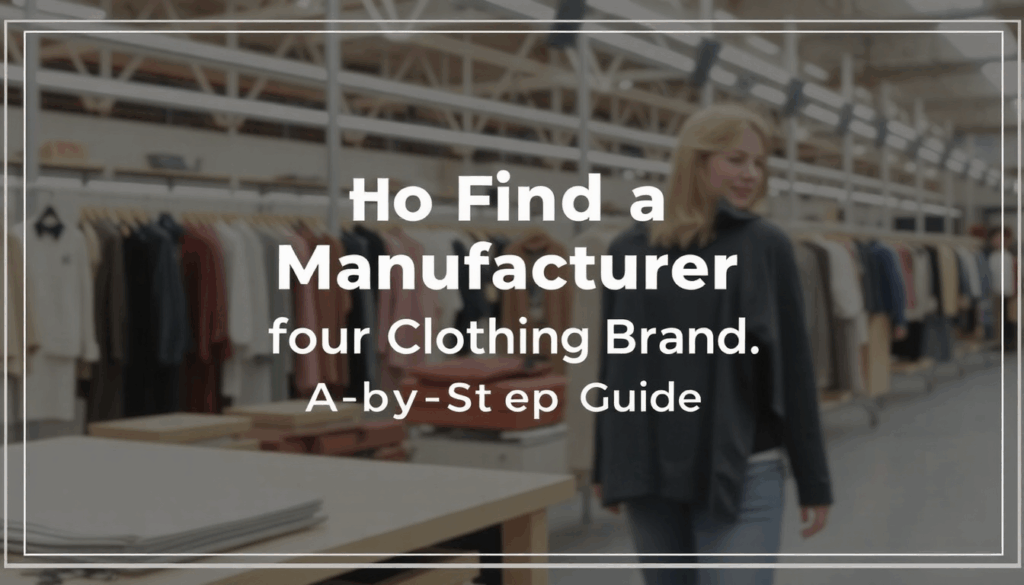
Phase 2: The Critical Sample Evaluation
Never place a big order without first getting a sample. The sample shows if they can make your design correctly. When you get the sample, check everything closely: fabric quality, stitching, fit, measurements, and overall feel. If it doesn’t match your vision, give clear feedback for improvements.
Red Flags to Watch For
Be alert for these warning signs:
- Poor Communication: Unclear answers, slow responses, or avoiding direct answers to your questions.
- Unwillingness to Create Samples: If they push back on making a sample, that’s a big problem. Samples are a standard part of the process.
- Requesting Large Upfront Payments: Good factories usually ask for a 30-50% deposit, with the rest due when complete. Demanding 100% upfront is suspicious.
- No Online Presence or Verifiable Address: You should be able to verify their location and find some evidence of their work history.
A Partnership Example: The ChengLin Clothing Approach
At ChengLin Clothing, we believe finding a manufacturer should feel like starting a partnership, not just making a deal. We want to make finding a clothing manufacturer easier for you. We focus on building long-term relationships with our clients, which guides our entire manufacturing process. Our company was created specifically to support new designers and emerging brands. We know that when you’re starting out, you might not be able to meet the high minimum orders that bigger factories require. From when we first get your tech pack, our team works closely with you. We go over every detail, offer suggestions to improve manufacturability, and make sure the sampling process is clear and accurate. Whether you need help with technical designs or are ready for full production, we offer services designed to support your brand from concept to customer.
Conclusion: Your Manufacturing Journey Starts Here
Finding the right factory is a defining moment for your brand. By following a structured process, you can move forward confidently and avoid common mistakes. Here’s a recap of the essential steps:
- Prepare your detailed tech pack before starting your search.
- Explore both online and offline channels to find potential partners.
- Decide whether domestic or overseas manufacturing is better for your brand.
- Vet every potential partner thoroughly using our checklist. The search may seem complex, but it’s manageable when done right. You now have the knowledge to build a quality product and a lasting partnership. Ready to discuss your project with a team dedicated to your success? Contact us at ChengLin Clothing today, and let’s build your brand together.
FAQ
- What is a tech pack and why is it important when finding a clothing manufacturer? A tech pack is a blueprint for your garment that includes technical sketches, materials list, measurements, and construction details. It’s essential because it communicates your exact requirements to manufacturers and prevents costly mistakes.
- What are the differences between domestic and overseas clothing manufacturing? Domestic manufacturing typically offers easier communication, faster turnaround, lower MOQs, and simpler quality control, while overseas manufacturing generally has lower labor costs but higher MOQs and longer lead times.
- How do I find reliable clothing manufacturers online? You can find manufacturers through B2B platforms like Alibaba and Sewport, industry forums, LinkedIn, strategic Google searches, and by networking in fashion communities on social media.
- What red flags should I watch for when vetting clothing manufacturers? Watch for poor communication, unwillingness to create samples, requests for large upfront payments, and lack of verifiable business information or online presence.
- What should I include in my first contact with a potential clothing manufacturer? Your initial outreach should include a brief introduction of your brand, your tech pack, and questions about MOQs, pricing structure, sample and production timelines, similar products they’ve made, and references from other clients.





